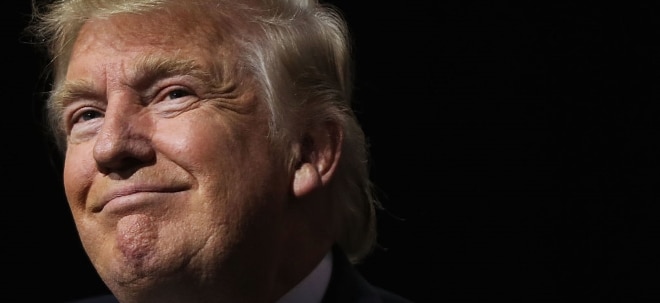WHO Foundation Launches Urgent Appeal to Save Measles and Rubella Surveillance Network as Global Outbreaks Escalate
$2 Million in Matching Funds Available to Help Sustain the World's Largest Disease Surveillance Network
GENEVA, May 29, 2025 /PRNewswire/ -- The WHO Foundation has launched an emergency fundraising appeal to protect the Global Measles and Rubella Laboratory Network (GMRLN), one of the "largest global surveillance system," which supports measles and rubella control and elimination, used by immunization programmes and outbreak responses worldwide.
The WHO Foundation aims to raise $3.6 million to maintain the global functionality of the network and support the measles and rubella program response in 22 high-risk countries in Africa, sustaining operations at 20 priority laboratories, and ensuring uninterrupted diagnostic testing, specimen transport, and emergency coordination in the region. However, this is only a fraction of what is truly needed—$22 million is required to keep the entire global network and the measles and rubella global program operational annually. Every donation made now will be matched dollar for dollar, up to $2 million, through a catalytic commitment from The ELMA Vaccines and Immunization Foundation.
The match was announced by Tom McPartland, CEO of ELMA Philanthropies, during the Seventy-eighth World Health Assembly in Geneva, reflecting The ELMA Vaccines and Immunization Foundation's commitment to building lasting systems that improve the health of Africa's children and strengthen indigenous capacity. This match is available until July 31, 2025, or until the full amount is unlocked. According to the World Health Organization (WHO), every $1 spent on measles prevention yields $58 in returns—through lives saved, disease averted, and strengthened systems.
"Every contribution helps keep this essential global surveillance network operational," said Anil Soni, CEO of the WHO Foundation. "This is an opportunity to protect families, children, and health systems everywhere from preventable outbreaks. Right now, every dollar will have twice the impact."
A Global Early-Warning System at Risk
For over 20 years, the GMRLN has helped countries detect and respond to outbreaks of measles and rubella, while also supporting surveillance of other outbreak prone vaccine-preventable diseases, like yellow fever, mpox and covid-19. By confirming or ruling out measles in suspected outbreaks, the network enables countries to respond quickly and accurately—whether by initiating targeted measles vaccine outbreak response or by deploying other necessary resources to address conditions with similar symptoms, such as dengue. This prevents costly misdiagnoses and ensures that the right immunization efforts are focused where they are most needed. Just as critically, GMRLN data help countries tailor their routine immunization programme and coverage, identify immunity gaps, and plan follow-up campaigns to reach missed children. Coordinated by WHO, the network spans more than 700 laboratories in 190 countries, supporting broader immunization goals under the Expanded Programme on Immunization (EPI), optimizing vaccine delivery strategies, and ensuring that no child is left behind. GMRLN contributes not only to emergency response, but also to the long-term strength and reliability of national health systems and their immunization programmes, which are the means to avoid costly disease outbreaks.
Now, this critical infrastructure is under threat. A major reduction in support from the U.S. Centers for Disease Control and Prevention—one of GMRLN's largest historical funders—has created a severe funding shortfall. Without immediate investment, labs could begin shutting down as early as 2025, particularly in Africa, where more than 60 percent of global measles cases are now reported.
If GMRLN weakens or fails, gaps in measles detection will widen, diagnoses will be delayed, and disease threats could spread unchecked—especially in low-resource settings. The world cannot afford to lose one of its most trusted tools for early detection and emergency response.
"Measles is more than a virus; it's a warning light," said Dr. Kate O'Brien, Director of WHO's Department of Immunization, Vaccines and Biologicals. "When outbreaks appear, it signals that health systems are struggling to reach people, track disease, and close immunity gaps. GMRLN doesn't just tell us where measles is—it's a critical barometer of how well immunization systems are working to protect everyone from all vaccine-preventable diseases. Without it, the world is flying blind. And in today's world—where measles knows no borders—that kind of vulnerability doesn't stay contained. Global health security is domestic health security."
A Surging Threat to Children
Measles remains the most contagious virus in the world. It can linger in the air for hours and infect over 90 percent of unvaccinated people exposed to it. In 2023, global coverage for the first dose of measles vaccine coverage was 83 percent—well below the 95 percent needed to prevent outbreaks, and two doses are required for full protection.
The effects are already visible. In 2024, Europe recorded more than 127,000 cases—the highest in over 25 years. The United States has confirmed over 1,000 cases to date in 2025, mostly among unvaccinated children. In Asia, rising case numbers are putting pressure on already strained health systems. In places with low vaccination coverage, a single outbreak can overwhelm hospitals and result in hundreds of preventable deaths, and cost significant resources to contain and shut down the outbreak, over months or in some cases years.
Measles also causes long-term harm to survivors' immune systems. Survivors often suffer from "immune amnesia," weakening their resistance to other infections and increasing the risk of life-threatening complications.
The recent approval of the Pandemic Agreement reinforces the urgent need for collective action to prevent, detect, and respond to health threats. Functional, resilient surveillance systems like GMRLN are central to that vision. Investing in GMRLN today means honoring that commitment, ensuring countries can rapidly identify emerging threats and coordinate an effective response before they escalate.
A Call to Action
The WHO Foundation is calling on philanthropic, corporate, and impact investment partners to prevent the collapse of this life-saving system.
"Investing in GMRLN is one of the most efficient ways to save lives and strengthen global health systems," said Robyn Calder, President of ELMA Philanthropies. "We hope others will join us. The time to act, and to protect this network and the children it serves, is now."
Looking ahead, WHO's goal is to upscale GMRLN as a multi-pathogen, future-ready platform by 2026, leveraging the synergies, shared opportunities and efficiencies across a set of core surveillance capabilities to detect, confirm, and stop the spread of measles, rubella, and other vaccine-preventable diseases. This work will also accelerate the implementation and use of a set of key innovations in support of more effective and efficient global surveillance and lab systems.
"This is a moment for collective action," said Soni. "We are inviting philanthropies, companies, and health leaders to join us. Every new donor brings us closer to unlocking the full match and protecting the world's most vulnerable children."
How to Help
Donations made today will be matched up to $2 million. To contribute or learn more, visit: https://who.foundation/gmrln/
About the WHO Foundation
The WHO Foundation is an independent global organization advancing health equity and improving lives worldwide. It connects donors and doers to support the World Health Organization and make "Health for All" a reality. Founded in 2020 and based in Geneva, the Foundation mobilizes private support for public health—scaling trusted solutions and funding life-saving responses where they're needed most. Through initiatives like "Share the Health," it is building a global movement to protect the most vulnerable and drive lasting change. Learn more at who.foundation
About The ELMA Vaccines and Immunization Foundation
The ELMA Vaccines and Immunization Foundation supports expanded access to vaccines and stronger immunization systems, particularly in Africa. As part of the ELMA Group of Foundations, it funds high-impact partnerships that protect children from preventable diseases and promote long-term health. Its investments focus on closing gaps in vaccine delivery, surveillance, and emergency response.
Learn more at https://www.elmaphilanthropies.org/vaccines
About the World Health Organization (WHO)
The World Health Organization is the UN agency leading global efforts to promote health, keep the world safe, and serve the vulnerable. WHO works with 194 Member States to prevent and respond to disease, strengthen health systems, and advance equity. Since 1948, it has helped eradicate smallpox, expand childhood vaccination, and coordinate responses to major outbreaks, including COVID-19. WHO sets global standards, provides technical support, and ensures people everywhere can live healthier, safer lives. Learn more at www.who.int
Logo: https://mma.prnewswire.com/media/2531138/5343595/WHO_Foundation_Logo.jpg
![]() View original content to download multimedia:https://www.prnewswire.com/news-releases/who-foundation-launches-urgent-appeal-to-save-measles-and-rubella-surveillance-network-as-global-outbreaks-escalate-302468164.html
View original content to download multimedia:https://www.prnewswire.com/news-releases/who-foundation-launches-urgent-appeal-to-save-measles-and-rubella-surveillance-network-as-global-outbreaks-escalate-302468164.html
SOURCE WHO Foundation


